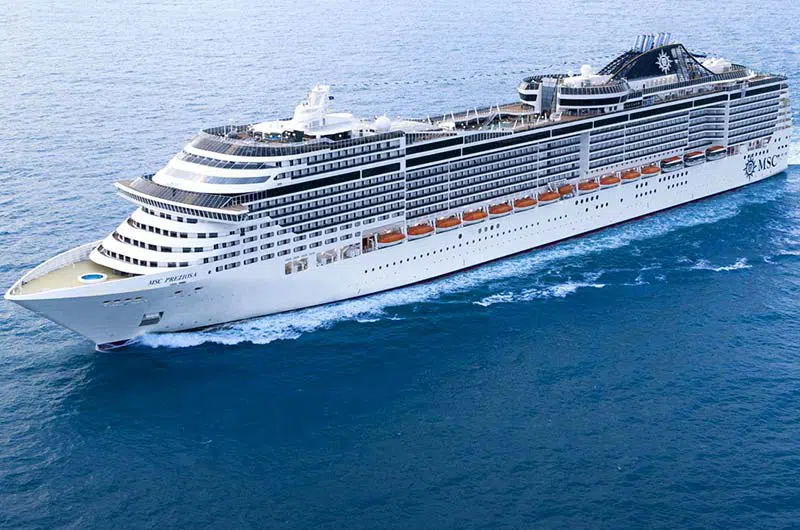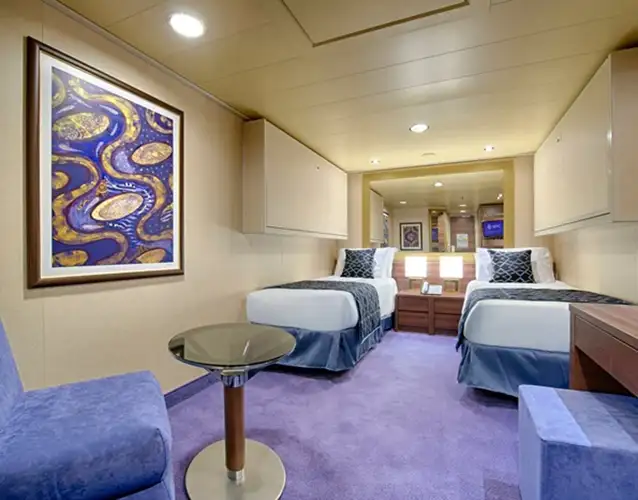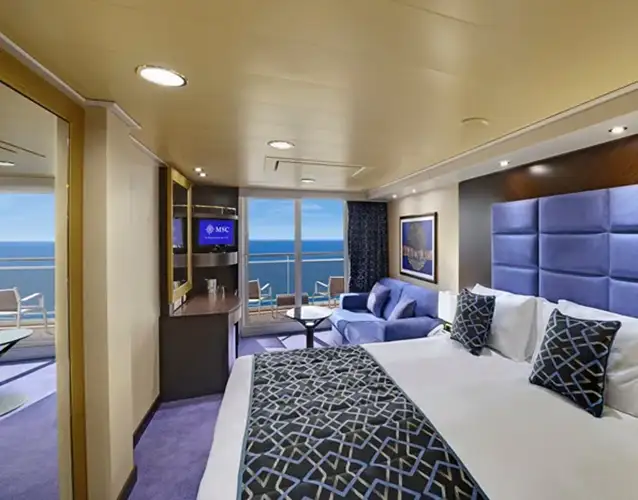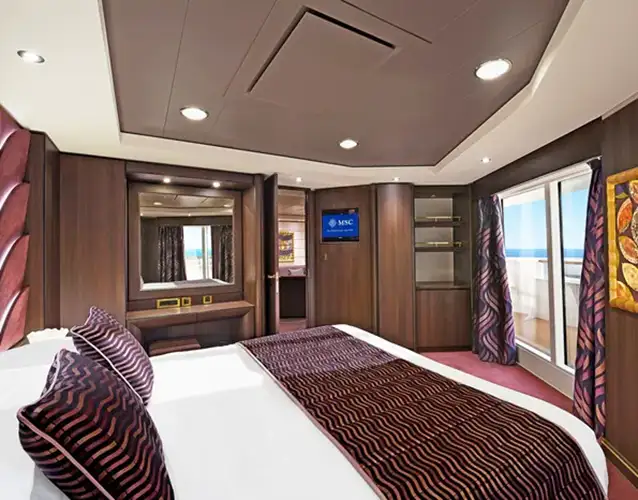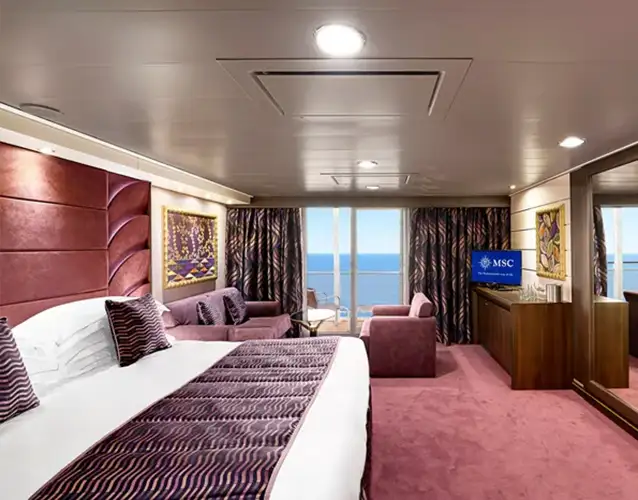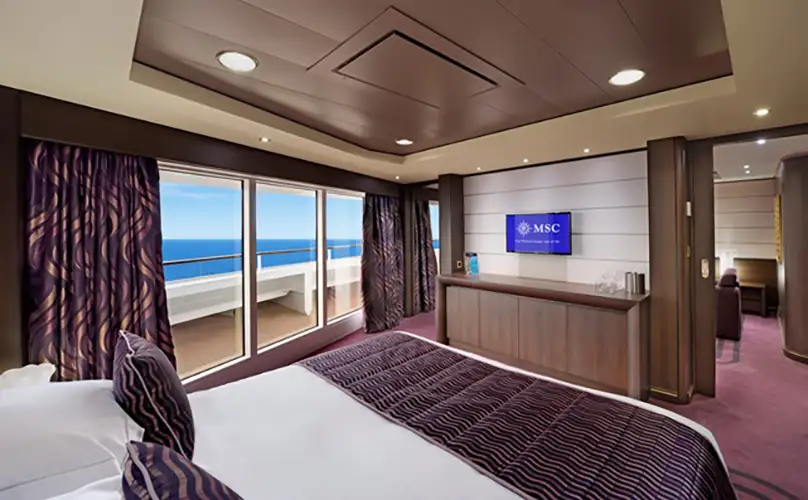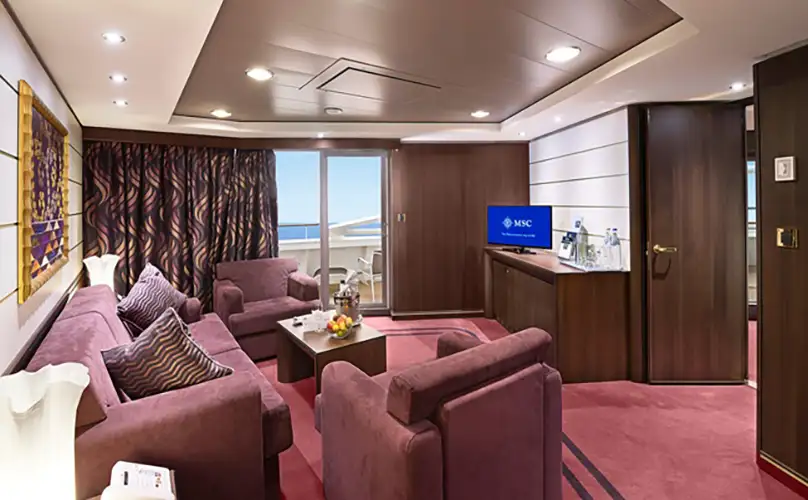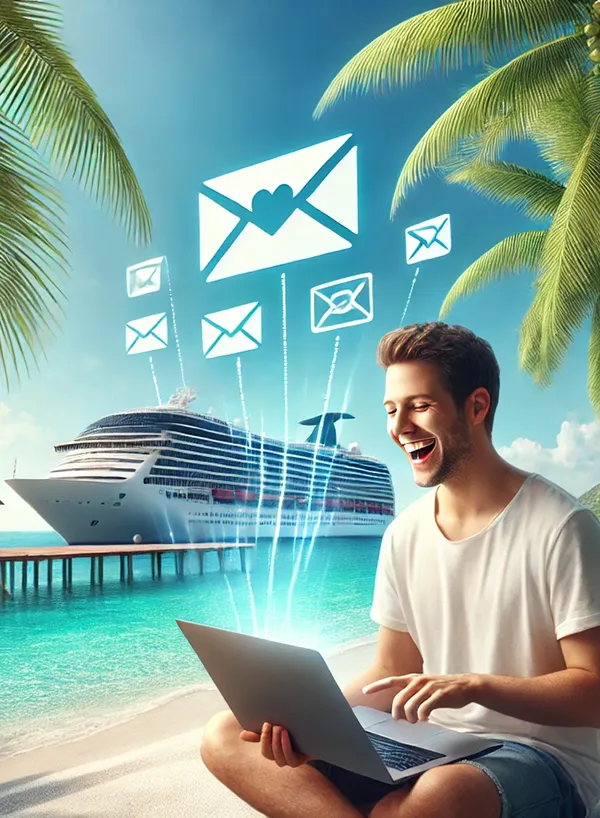MSC Cruises Ocean Cruises: 21 nights from Rio de Janeiro with MSC Preziosa
Apr 3, 2026
Brazil, Portugal, Spain, United Kingdom, France, Belgium, Denmark, Norway
Cruise itinerary
Departure Port: Rio de Janeiro ➞
Landing: Oslo
-
Friday, April 3, 2026 - 8:00 PMRio de Janeiro
-
Saturday, April 4, 2026Navigation
-
Sunday, April 5, 2026 9:00 AM - 7:00 PMIlheus
-
Monday, April 6, 2026 7:00 AM - 5:00 PMSalvador
-
Tuesday, April 7, 2026 9:00 AM - 5:00 PMMaceio
-
Wednesday, April 8, 2026Navigation
-
Thursday, April 9, 2026Navigation
-
Friday, April 10, 2026Navigation
-
Saturday, April 11, 2026Navigation
-
Sunday, April 12, 2026Navigation
-
Monday, April 13, 2026Navigation
-
Tuesday, April 14, 2026 9:00 AM - 7:00 PMFunchal
-
Wednesday, April 15, 2026Navigation
-
Thursday, April 16, 2026 9:00 AM - 5:00 PMVigo
-
Friday, April 17, 2026 9:00 AM - 6:00 PMGijon
-
Saturday, April 18, 2026Navigation
-
Sunday, April 19, 2026 7:00 AM - 8:00 PMSouthampton
-
Monday, April 20, 2026 7:00 AM - 8:00 PMLe Havre
-
Tuesday, April 21, 2026 9:00 AM - 6:00 PMZeebrugge
-
Wednesday, April 22, 2026Navigation
-
Thursday, April 23, 2026 8:00 AM - 4:00 PMCopenaghen
-
Friday, April 24, 2026 9:00 AMOslo
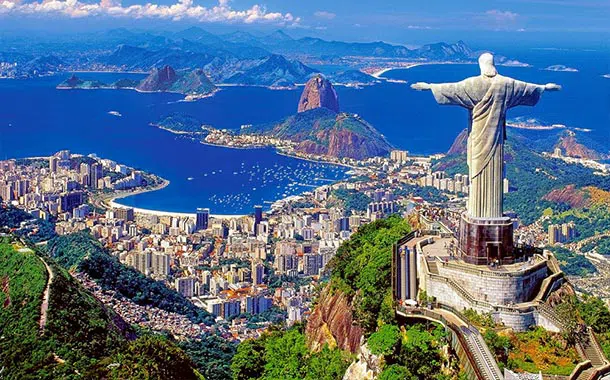
Rio de Janeiro
Rio de Janeiro (whose name means January River in Portoguese) is a city in Brazil and the capital of the homonymous confederate state. Its population is almost 6,186,710 inhabitants (according to 2009 IBGE census), and its surface is 1,256 km2 while the population in the metropolitan area is almost 12 million habitants. Rio is the Brazil's second largest city after São Paulo and it was the capital of the state from 1763 until 1960, after Salvador da Bahia and before Brasilia.
The city is famous for its tourist attractions including: the beaches of Copacabana and Ipanema, Art Nouveau statue of Jesus called Cristo Redentor located on Mount Corcovado, the Pão de Açúcar (Sugar Loaf) with its cable car, and its annual carnival, the most famous in the world. In Rio de Janeiro there is the largest forest within an urban area, theTijuca forest.
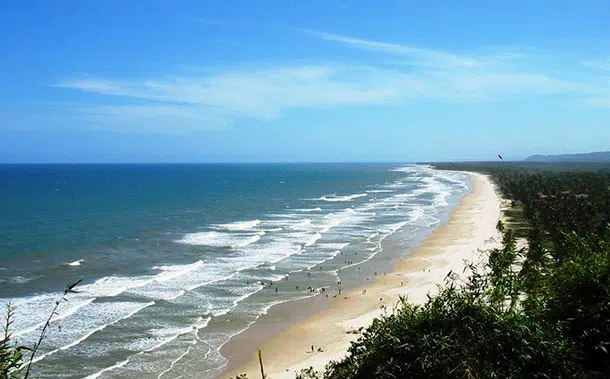
Ilheus

Salvador
Salvador, the capital of the state Bahia in Brazil, is a lively city that vibrates to the rhythm of samba and candomblé, offering a rich and variegated cultural mosaic. This historic city, renowned for its breathtaking beaches, colonial architecture and vibrant nightlife, is a stop not to be missed on Salvador cruises. Its unique atmosphere, where tradition and modernity are linked together, offers visitors an unforgettable experience, immersed in Afro-Brazilian history and culture.
Explore the historic center: the Pelourinho
The heart of Salvador is the Pelourinho, its historic city center, declared a UNESCO World Heritage Site. Walking around the clobbed streets, you can admire colorful colonial houses, Baroque churches and lively squares. The Pelourinho is also the stage of recurring open-air musical performances and folkloric dances, offering visitor an authentic taste of local culture. Cruises that stop in Salvador allow you to immerse in this rich human cultural heritage, letting passengers living unique moments.
Immerse youself in Afro-Brazilian culture Salvador is considered Afro-Brazilian cultural capital of the country. Here, visitors can explore museums dedicated to African art, attending candomblé cerimonies or simply enoying the local cuisine, that fuses African, Indigenous and Portuguese flavors. Enjoying a cruise that includes Salvador offers the opportunity to discover these deep cultural roots, enriching the trip with meaningful and authentic
experiences.
Discover Paradise Beaches
In addition to its cultural richness, Salvador amazes with its enchanting beaches. From Praia do Forte to Itapuã, the coastlines around Salvador invite relaxation and recreation, with crystal-clear waters and fine sand. Cruises stopping in Salvador allow travellers to enjoy these natural wonders, offering a perfect balance of culture, adventure and relaxation. Opting for a cruise that stops in Salvador means choosing a journey rich in history, culture and natural beauty. The city offers a complete travel experience, capable of satisfying every type of traveller, from the passionate historian to the adventurer, from the bodybuilder to the seeker of relaxation on the beach. Salvador promises to leave indelible memories in the hearts of those who visit it, making it a must-see destination on cruises along the Brazilian coast.
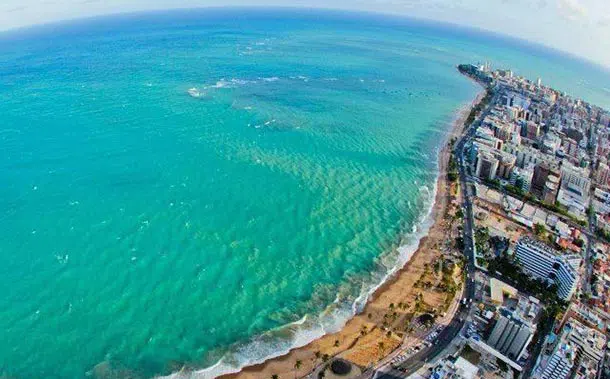
Maceio
Discover Maceio, the pearl of the northeast!
Maceio, capital of Alagoas in Brazil, is a hidden gem, renowned for its turquoise waters and its fine white sand beaches. Renowned as 'the Pearl of the Northeast', this city offers a relaxing atmosphere and it is surrounded by uncontaminated nature. Its privileged location along the coast allows visitors to enjoy beautiful landscape and unforgettable sunsets, making Maceio the best destination for those who want to
escape from everyday life.
THE ENCHANTING BEACHES OF MACEIO
The beaches of Maceio are undoubtedly ones of the best beaches in Brazil. Praia do Gunga, with its rows of palm trees and white land, is a true paradise on Earth, while Praia de Pajuçara offers crystal- clear water ideal for snorkelling and diving. For those seeking a more authentic experience, a visit to the natural pool of Pajuçara, reachable by jangada (a small local boat), is an activity not to be missed. These magical places offer the opportunity to swim among colorful fishes in an extraordinary natural environment.
MACEIO CRUISES
Choosing Maceio as the destination of your cruise means immersing yourself into a world full of beauty, adventure and relaxation. The port of Maceio attracts visitors with its peaceful charm that immediately makes them feel at home. Cruises that stop in Maceio offer the unique opportunity to explore this enchanting destination, with its paradisiacal beaches, delicious local cuisine and warm Brazilian hospitality. It is the best choice for those who want to add a touch of exclusivity and magic to their own trip, discovering one of Brazil's best well-preserved secrects.

Funchal
The famous Portuguese poet, Júlio Dinis described Funchal as: ‘The sea on one side, the mountains on the other and between these two majestic splendours, the city smiles like a sleeping child, safe and warm, between its parents’. Funchal, the capital of the Portuguese island of Madeira is the soul of Portugal. Settlers over 500 years ago were attracted to this sheltered place, which is structured like a natural ‘amphitheatre’. Gentle slopes, abundant greenery and flowers, rise above the pretty harbour for almost 1,200 metres. The port is located 15-minute walk from the city center, in Funchal's magnificent bay with its sparkling blue waters. Due to its strategic mid-Atlantic location, Madeira has been a stopover point for ocean-going ships for many years.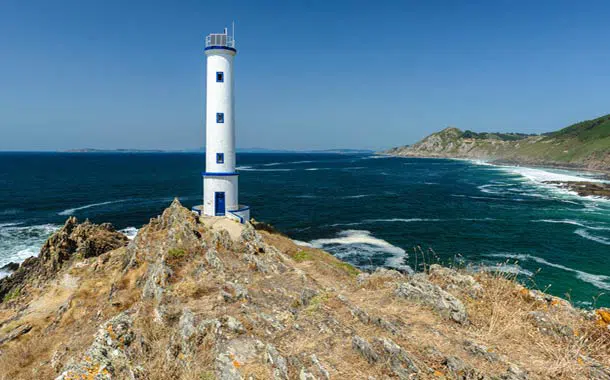
Vigo
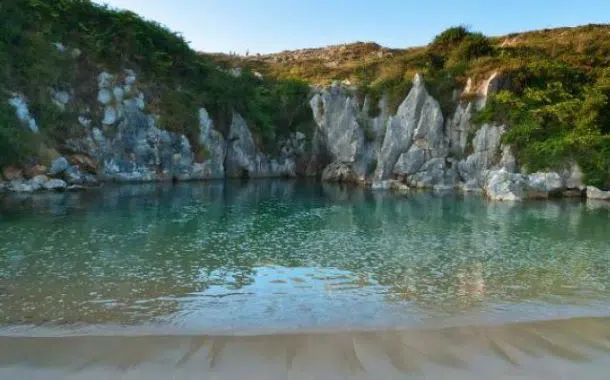
Gijon
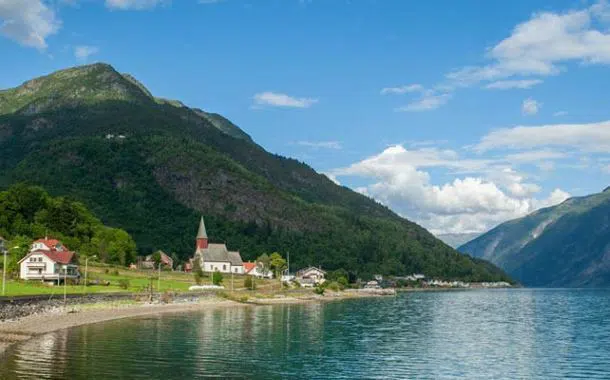
Southampton
Southampton is a city positioned in the South of Great Britain and its port is one of the main ports in Europe. From the port of Southamptos it is possible to set sail for a Cunard transatlantic cruise and reach New York, or visit Amsterdam and Belgium with an MSC cruise. The city offers, further to the New Forest National Park, a wide natural park with its suggestive woods, also many museums and art galleries and remarkable architectural works. Noteworthy is King John’s Palace, of Norman origins as well as the old walls with 7 entrances to the city. An evidence of the Victorian Age is Tudor House, collecting objects dated back to that period. For the art lovers, Southampton City Art Gallery offers exhibitions of any kind of art, from drawing to photography with shows that attract many visitors.
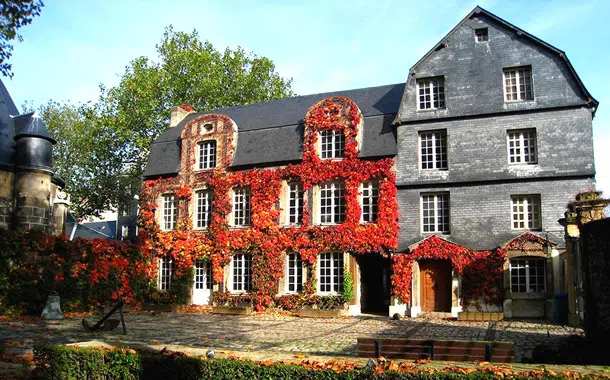
Le Havre
Le Havre is worth a visit, not only as a stopover on the way to Paris or other inland destinations, but also as one of the great examples of post-war planning. It is a strange and strangely fascinating city, listed by
Unesco as a World Heritage Site.
Wandering through the streets of the seaside town of Le Havre, one might think one had stumbled upon a forgotten outpost of the Eastern Bloc. Obliterated by World War II bombings, the city was completely rebuilt by the Belgian architect Auguste Perret and, what emerged from the ashes of old Le Havre, is a kind of love letter to concrete: endless rows of blocks of buildings, straight avenues stretching out from the central square, dominated by the 100 m high 'Stalinist Baroque' style cathedral, looks like something straight out of the pages of '1984'.
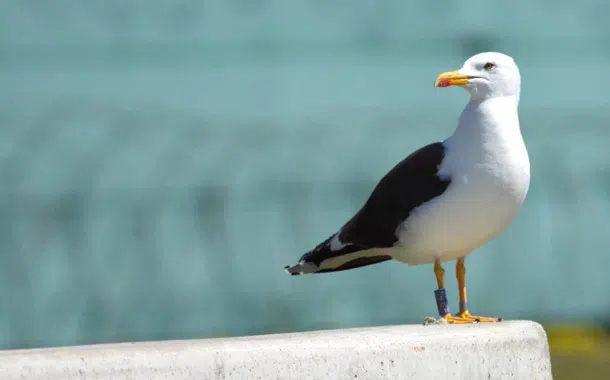
Zeebrugge
Connected to Bruges by 7.5-kilometer canal, Zeebrugge is a seaside resort that looks to the future.
On the sea front, hotels and cafes offer a warm welcome. Zeebrugge is the most important Belgian fishing port. The Zeebrugge wholesale fish market, located in a modern complex in the inner port, is one of the largest and sophisticated of its kind in Europe. Zeebrugge also has an attractive tourist port that can contain a maximun number of 100 ships. Furthermore, its geographical position is very convenient, near the beautiful city of Bruges, the trendy seaside resort of Knokke and the picturesque village of Lissewege.
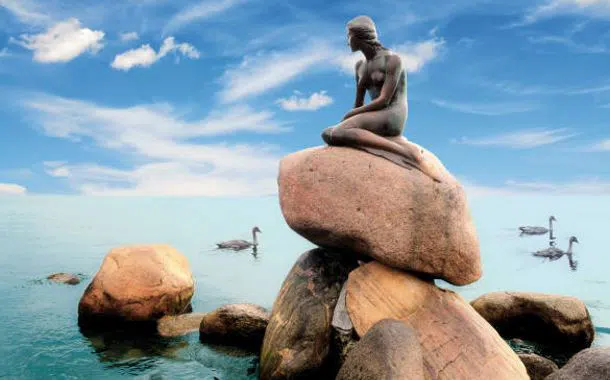
Copenaghen
Copenhagen, literally "port of the merchants", is the capital of Denmark and one of the country's most densely populated cities. Originally a city mainly inhabited by fishermen, it became a fundamentally important port for trade.
Copenhagen is a year-round tourist destination and in summer the flow of tourists increases considerably thanks to Northern Europe cruises.
It is very common to add a stay in the city before a cruise, to take in its distinguishing relaxing atmosphere and see what it has to offer. Among its famous attractions you cannot miss the statue of the Mermaid which is located right at the entrance to the port and the Tivoli Gardens, one of the world's largest amusement parks, opened in 1843 and loved by everyone.
Copenhagen (København in Danish and 'Copenaga' in Italian [no source]) is the capital and the most populous city of Denmark with 518,574 inhabitants in the municipality (1,167,569 in the urban area). The city stretches across the islands of Sjælland and Amager and is separated from the city of Malmö in Sweden by the strait of Øresund.
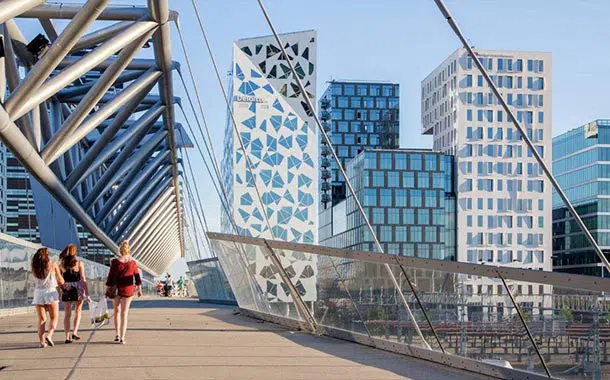
Oslo
Oslo, located in the southeastern part of the country, is the capital and largest city of Norway. Oslo is a vibrant city that seamlessly blends its rich history with modern urban development, making it a dynamic and attractive place to live and visit.
It was founded around 1040 by King Harald Hardrada and became the capital of the country in 1299 under King Håkon V. The city was partly destroyed by a fire in 1624 and its reconstruction began under the reign of King Christian IV. King Christian IV renamed the city Christiania. The original name, Oslo, was restored in 1925. Oslo is known for its beautiful natural surroundings, including forests, hills, and lakes. Thanks to its beautiful landscapes, it is possible to take part in numerous outdoor activities like hiking, skiing, and boating.
These unique characteristics make the city the ideal destination for nature lovers. The city is home to several renowned museums, including the Viking Ship Museum, the Munch Museum (dedicated to the works of Edvard Munch, famous for "The Scream"), and the National Gallery. Do not miss the opportunity to visit one of them and share your pictures with your friends! Every year Oslo holds one of the most important cultural events, the Nobel Peace Prize is awarded annually in the city at the City Hall.
